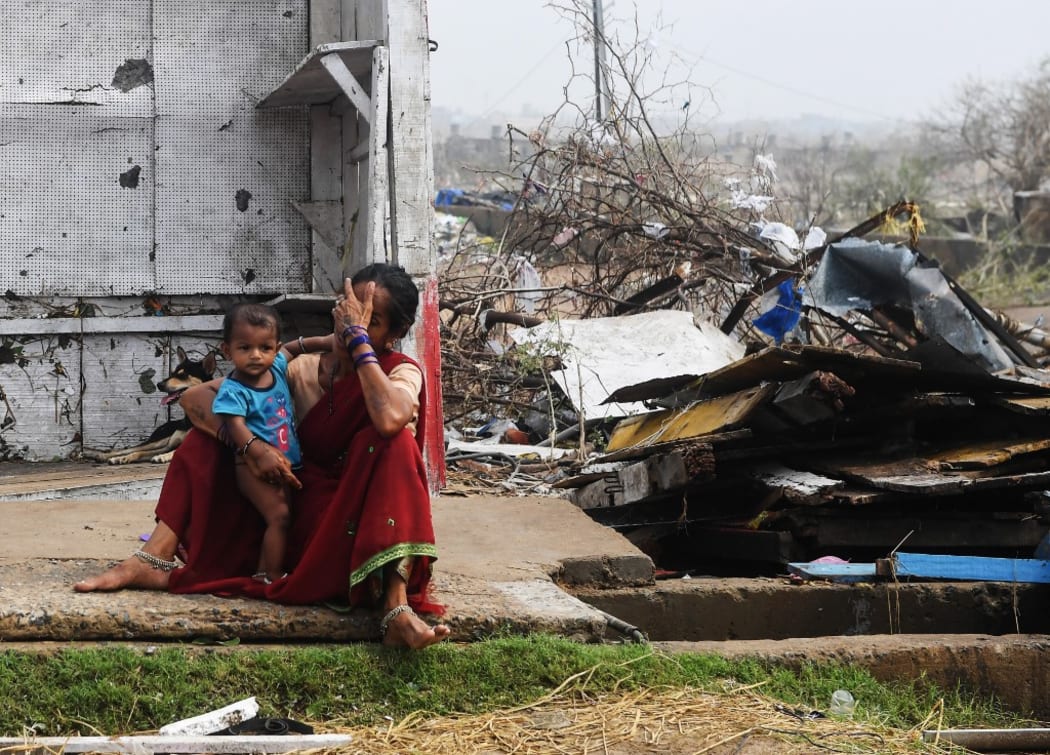The strongest cyclone to hit coastal India for years yielded spectacular shots of devastation for TV news and social media this week. But the real story was why so few people died in such a poor and populous place.

An Indian woman sits with her child next to storm-damaged buildings in Puri in the eastern Indian state of Odisha, Photo: AFP
If a storm strikes in the US, it’s more likely to be in the world news here than one in Bangladesh affecting far more people. A storm in Indiana might make news here, but not one in India even if it’s much more destructive and deadly.
Partly that’s because our news media assume there’s more interest here in what happens in the US than in India.
That’s odd when you consider that 155,178 people identified as Indian when asked to indicate their ethnic identity in the 2013 census, while only 12,342 described themselves as American and 21,462 stated they were born in the US.
A simpler explanation to the disparity in coverage is the easy availability of pictures for TV from the US.
But when Cyclone Fani tore through one of India's poorest coastal regions last weekend, there were plenty of pictures for the media to run and it was widely reported here.
Newshub at 6 viewers for example saw a report from ITV news in which correspondent Juliet Bremner described gasps of horror as a huge construction crane “crashed down on buildings below in this densely populated city”.
But the real story was not how many people died during the cyclone but how few, considering the state of Odisha has the same population as Spain but far fewer resources to deploy against extreme weather. Under the headline: How Do You Save a Million People From a Cyclone? Ask a Poor State in India The New York Times reported that Indian authorities “whisked more than a million people to safety, executing a meticulous evacuation plan that they have been perfecting ever since that disastrous storm in 1999.”
After that 'super-cyclone' killed thousands, hundreds of new shelters were built on the coastline.
"To warn people of what was coming, they deployed everything they had: 2.6 million text messages, 43,000 volunteers, nearly 1000 emergency workers. There were also television commercials, coastal sirens, buses, police officers, and public address systems blaring warnings in local languages," the paper said.
Someone who saw this first-hand was Bob McKerrow, formerly a disaster relief expert with the Red Cross for more than 30 years.
“In the Bay of Bengal cyclone in 1970, around one million people were killed. Around the coastline of Bangladesh they built cyclone shelters and got volunteers to disseminate cyclone warnings and knock on the door of every house and make sure that people knew,” he said.
“In the next cyclone 50,000 were killed in 1980. In 1985 just 20,000, Today - virtually no-one. The same in India because they’ve spent so much money on community preparedness and we’re seeing the benefit of it,” he said.
After 20,000 deaths when a cyclone hit India's southeast coast in 1977, he spent two years supervising the construction of cyclone shelters in Tamil Nadu and Andhra Pradesh..
Mr McKerrow said the shelters had saved thousands of lives in five further cyclones since then.
"I was working and living in India when the 2004 Indian Ocean tsunami struck and I received first-hand reports lives were saved as many villages sought refuge in these cyclone shelters," he said.
“Somehow we are not good at telling those stories. A poor farmer who’s got half an acre of land today pays a small tax on that to pay for an insurance policy when he buys a bag of cement. If he buys five bags of fertiliser in a year he’s actually insuring himself," he said.
"When they get hit by disasters, fertiliser companies pay them an insurance premium. It’s brilliant to see what’s happening,” Bob McKerrow told Mediawatch.
“There are hundreds of stories out there but the media don’t seem to pick them up. It’s more spectacular when you see a tsunami smashing into a Japanese village than to read about farmers getting insurance when they buy fertiliser,” he said.

